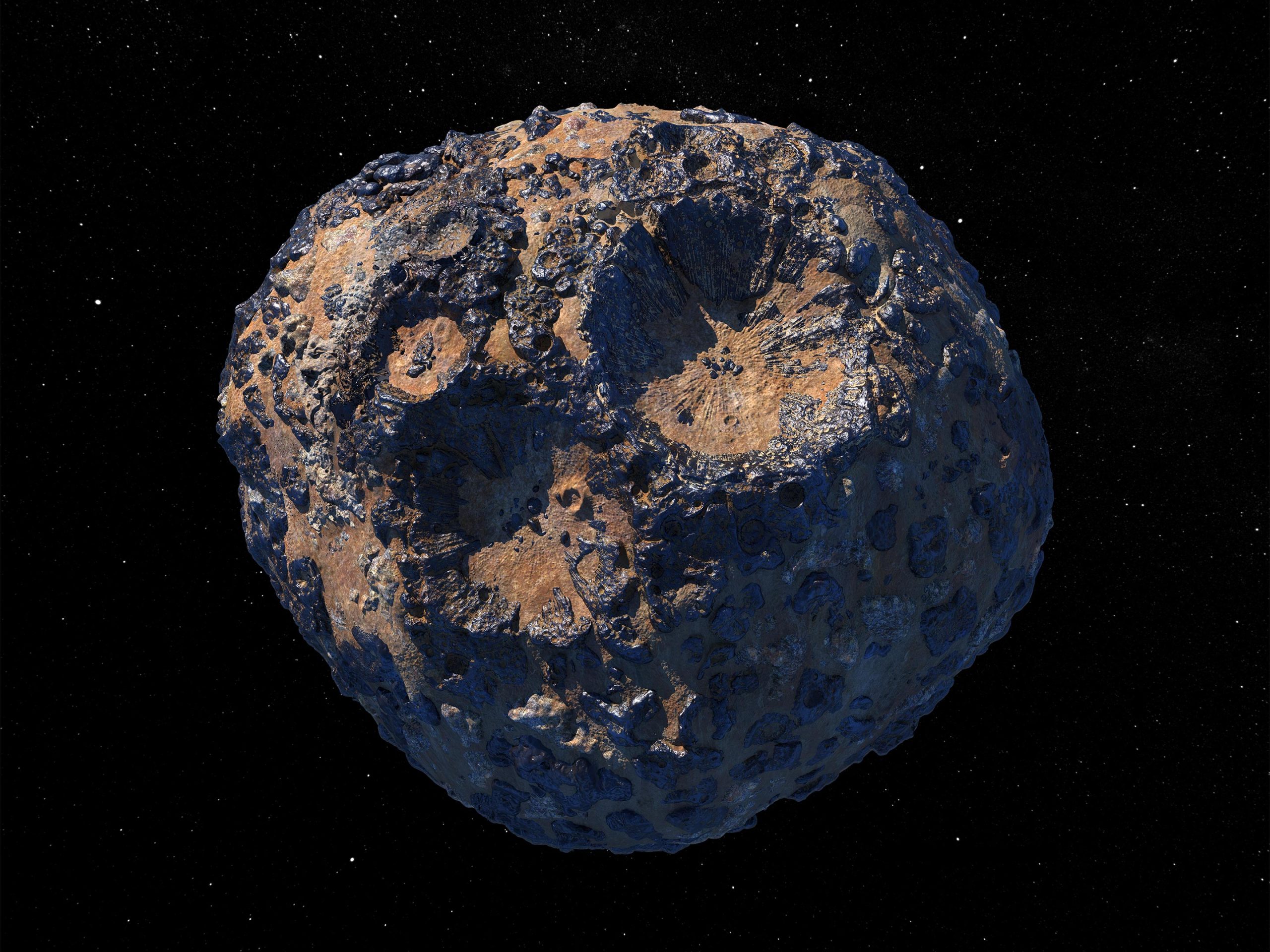
A new mission is expected to launch this year to go and examine an interesting asteroid, 16 Psyche. That asteroid is thought to be made almost entirely of iron, suggesting that it could be the core of a larger body that either never fully formed or was somehow destroyed in a collision. There was even one article running around last year that estimated the value of Psyche’s metals as somewhere around $10 quintillion. No, seriously. Someone wrote that.
However, before all those wanna-be asteroid miners get their hopes up, new research published in JGR: Planets now suggests that Psyche is less metallic than previously thought. While light reflecting off the surface of the asteroid does suggest a darkness that belies a metallic composition, measurements of the mass and density do not match up with that hypothesis. In fact, per the press release: The way [Psyche’s] gravity tugs on neighboring bodies suggests that Psyche is far less dense than a giant hunk of iron should be. So if Psyche is indeed all metal, it would have to be highly porous — a bit like a giant ball of steel wool with nearly equal parts void space and solid metal.
Lead author Fiona Nichols-Fleming explains: What we wanted to do with this study was see whether it was possible for an iron body the size of Psyche to maintain that near-50% porosity. We found that it’s very unlikely.
For Psyche to have remained that highly porous, the internal temperature after formation would have had to be a rather cool 800 Kelvin. Otherwise, the iron would still be malleable, and the asteroid’s own gravity would have collapsed all the pore space and created a smaller, denser object. At 250 kilometers across, it couldn’t have cooled that quickly. Additionally, any impact that could have added that porosity back in by splintering the asteroid would also have heated it up above that same 800 Kelvin threshold, meaning that porous state wouldn’t last, either.
This new model suggests that Psyche may be hiding a rocky component that is making the asteroid less dense overall. So why does it look so very metallic as seen from Earth? My new favorite word – ferrovolcanism. Iron-spewing volcanoes. They could exist, they could have been on Psyche, and they would have moved internal iron to the surface, coating it like a cake pop.
Well, I was looking forward to the Mission to Psyche before today, but now I’m really looking forward to it. It should launch later this year and arrive at 16 Psyche in 2026. We’ll bring you updates as we get them and cover the launch when it happens.
More Information
Brown press release
“Porosity Evolution in Metallic Asteroids: Implications for the Origin and Thermal History of Asteroid 16 Psyche,” Fiona Nichols-Fleming, Alexander J. Evans, Brandon C. Johnson, and Michael M. Sori, 2022 February 1, JGR: Planets




 Join the Crew!
Join the Crew!
 Escape Velocity Space News
Escape Velocity Space News
0 Comments